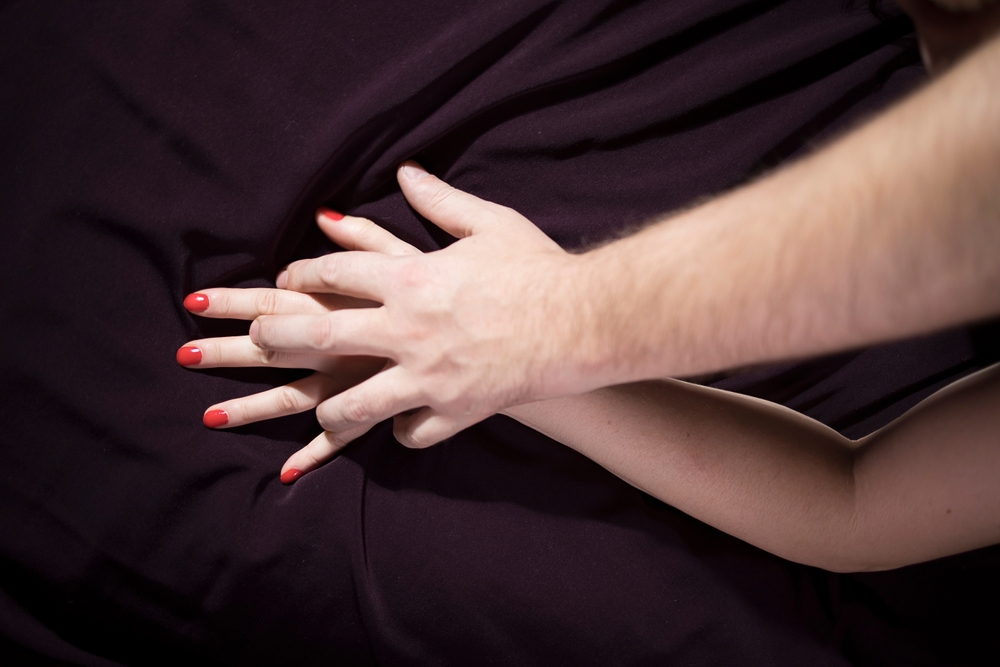Last Updated:
September 18th, 2025

It is easy for a person to make a joke about having a “high sex drive” or to make offhand remarks about our pornography use, but beneath casual remarks and nervous laughter, there may be serious questions waiting to be asked, such as: When does a high libido tip into something more compulsive or dangerous?
This blog looks at the elusive line between a high libido and the propensity for compulsive porn viewing, as well as steps you can take if you wish to establish greater control over the urge to consume pornography.\
Understanding the terms “high libido” and “porn addiction”
In order for us to examine the line between a high libido and porn addiction, we must first be clear about the terminology used:
High libido
A person’s libido, also called their “sex drive,” is defined by Merriam-Webster as an “instinctual psychic energy that in psychoanalytic theory is derived from primitive biological urges (as for sexual pleasure or self-preservation) and that is expressed in conscious activity.”
Your libido is governed by multiple factors, including:
- Biological factors, like testosterone and estrogen levels
- Psychological factors, such as your stress levels
- Social factors, such as your intimate relationships
A person’s libido may be quantified as high or low, relative to how it is felt in others. A high libido, or “sex drive,” may be hard to define as there’s no normal. Generally, a high libido isn’t cause for concern unless it is causing distress or interfering with a person’s daily life. The problem may arise when a person’s libido feels out of control, such as in sex addiction or sexual compulsion.
Porn addiction
Porn addiction is behavioural addiction wherein a person becomes compulsively reliant on porn, despite its negative consequences. It is not formally recognised as a disorder in every clinical manual, but it is increasingly being acknowledged in both research and clinical settings.
The viewing of online pornography has surreptitiously become so commonplace in our lives that many of us don’t even talk about it anymore. A person suffering from a porn addiction will feel unable to stop consuming and watching it, even if it’s leading to anxiety, distress, secrecy or problems with intimacy and sexual function. Over time, the viewed pornography can spiral into new, more extreme material, similar to how substance tolerance works.
The key difference between the terms “high libido” and “porn addiction” lies in control. Someone with a high libido chooses to engage with sex or pornography frequently, while a person with a porn addiction may feel that the choice has become an illusion.
When does porn use become harmful?
Viewing pornography may not be inherently harmful. For many people, it is a relatively harmless act. Many arguments are being raised as to the ethical and moral principles in pornography production, but most people will admit that it is a “relatively normal” part of their lives.
This is what makes the damage of porn use hard to measure. One person’s “normal” can be another person’s “extreme.” However, it is hard to deny that there are darker aspects of porn use that can impair a person’s relationships, mental health and daily functioning.
A cursory glance at porn-viewing statistics
Each person’s relationship with the porn they view is personal. Not all porn viewing leads to deeper issues. However, when viewing some statistics on porn viewing, it is hard to not be taken back by the scale:
- Porn sites generate more visitors each month than Amazon, Netflix and Twitter combined (2017 statistics)
- 28,000 people watch porn every second, with users spending over $3,000 per second
- An estimated 13% to 20% of all mobile searches are for porn
- In the US, an estimated $16.9 billion is lost annually due to productivity loss, including porn viewing at work
While we can quantify some of the ways porn is being viewed and consumed, there may indeed be greater, psychological tolls placed on the human body and mind as porn addiction deepens.
The real impacts of “you brain on porn”
Our relationship with online porn consumption is still relatively new, so research into risks may only stretch back a few decades. According to one piece of research, 200,000 Americans are now classified as “porn addicts,” and developing research is starting to suggest that porn addiction causes changes in the mind, similarly to how a substance addiction works.
One of the best resources you can find for the dangers of porn addiction is the website yourbrainonporn.com. It has become the world’s first training course for professionals on problematic pornography use. Their wonderful website has compiled research and personal accounts on how porn overuse can affect mental, emotional and sexual health. It’s become an indispensible tool for those questioning their relationship with porn.
Many materials on the website show how, over time, repeated overstimulation can lead to reduced sensitivity to many of life’s everyday pleasures. Real-life intimacy may start to feel less satisfying and people may turn to digital fulfilment to satisfy an urge that lies in real-world interaction. Strains on relationships and increased isolation may drive a person to view porn at a higher rate. In some cases, this may spiral into seeking more extreme material.
There are also increasing studies into the relationship between porn viewing and PIED, or porn-induced erectile dysfunction. This condition is characterised by a man’s sexual arousal becoming dependent on the use of pornography, rather than a physical connection.
The impact of porn on each person’s life will be different, but recognising the damage that is being caused to people around you may provide the first step in reducing your pornography consumption and thereby decrease its suggested negative effects.
Signs to watch for that porn use is becoming addictive
If you feel as though your porn viewing habits are possibly becoming problematic, it may be useful to look for signs that it is worsening:
- Escalating consumption and desensitisation: You may notice yourself spending more time watching porn or seeking out more extreme or niche material to achieve the same level of arousal. This tolerance build-up is a key feature of behavioural addictions.
- Secrecy, shame and worsening self-esteem: If you feel the need to hide your porn use from your partner, or if you feel a profound sense of guilt, shame or emotional numbness afterwards, it could be a sign that porn is no longer just a harmless outlet.
- Physical signs like PIED (porn-induced erectile dysfunction): Some people find that they struggle to maintain arousal during real-life intimacy, but not when watching porn. This condition may indicate that excessive porn use has rewired your arousal responses, though it is often reversible.
If one or more of these signs feel familiar, it doesn’t necessarily mean you’re addicted, but it may be worthwhile to re-evaluate the role porn is playing in your life.
Finding a balance and reclaiming your sexual well-being
Reaching a healthy balance with porn or sexual desire can be an act of reclaiming control and reconnect with what brings genuine fulfilment in your life. If you’re concerned about compulsive behaviour or sex addiction, here are some helpful steps to take:
- Encouraging open and judgement-free conversations with a partner, therapist or trusted friend to reduce secrecy and guilt.
- Reflect on your habits and ask if they align with your core values or are masking deeper issues.
- Take a break or set limits to reset your brain’s reward system and reduce compulsive urges
- Visit online support pages to learn more from the experiences others like you have been through.
- Seek support from therapists or support groups if porn use feels out of control.
Where can I find help for porn addiction?
Recovering from a porn addiction means deeply understanding what’s driving it. Similarly to substance addictions, it is often issues like stress, trauma or low self-esteem looming beneath the surface.
At UKAT, we provide tailored treatment programmes in a safe, non-judgemental setting. Our expert team helps you explore the roots of your addiction and build healthier coping strategies for lasting change.
If porn use is affecting your life or relationships, support is here. Contact us today and take the first step towards a more balanced future, free from the grasp of addiction.
(Click here to see works cited)
- “Libido Definition & Meaning.” Merriam-Webster, Merriam-Webster, www.merriam-webster.com/dictionary/libido
- Kleinman, Alexis. “Porn Sites Get More Visitors than Netflix, Amazon and Twitter Combined.” HuffPost, HuffPost, 7 Dec. 2017, www.huffpost.com/entry/internet-porn-stats_n_3187682.
- “Internet Pornography by the Numbers.” Webroot, www.webroot.com/us/en/resources/tips-articles/internet-pornography-by-the-numbers
- Buchholz, Katharina, and Felix Richter. “Infographic: How Much of the Internet Consists of Porn?” Statista Daily Data, 11 Feb. 2019, www.statista.com/chart/16959/share-of-the-internet-that-is-porn/.
- McTavish J. Internet Pornography: Some Medical and Spiritual Perspectives. Linacre Q. 2020 Nov;87(4):451-463. doi: 10.1177/0024363920933114. Epub 2020 Jun 26. PMID: 33100393; PMCID: PMC7551539.
- “Your Brain on Porn.” Your Brain On Porn, www.yourbrainonporn.com
- (PDF) Pornography Induced Erectile Dysfunction among Young Men, www.researchgate.net/publication/331081634_Pornography_Induced_Erectile_Dysfunction_Among_Young_Men. Accessed 27 May 2025.





